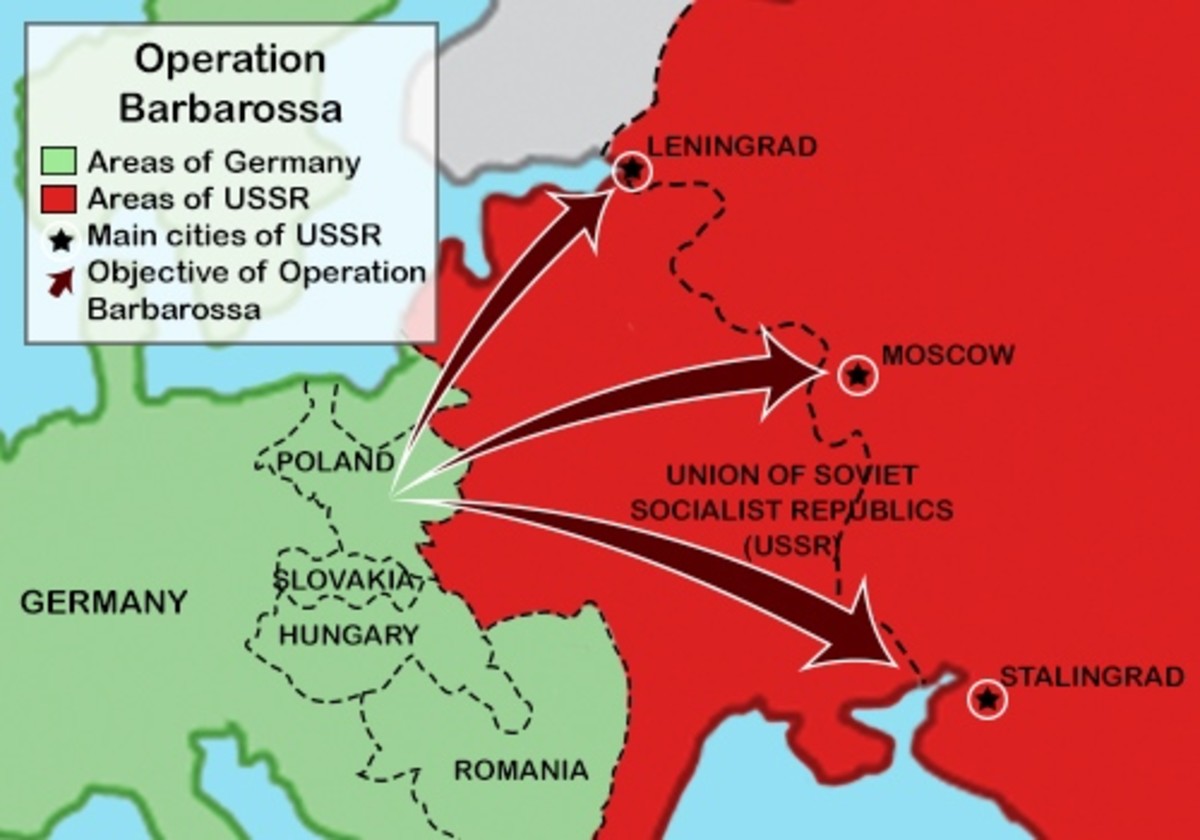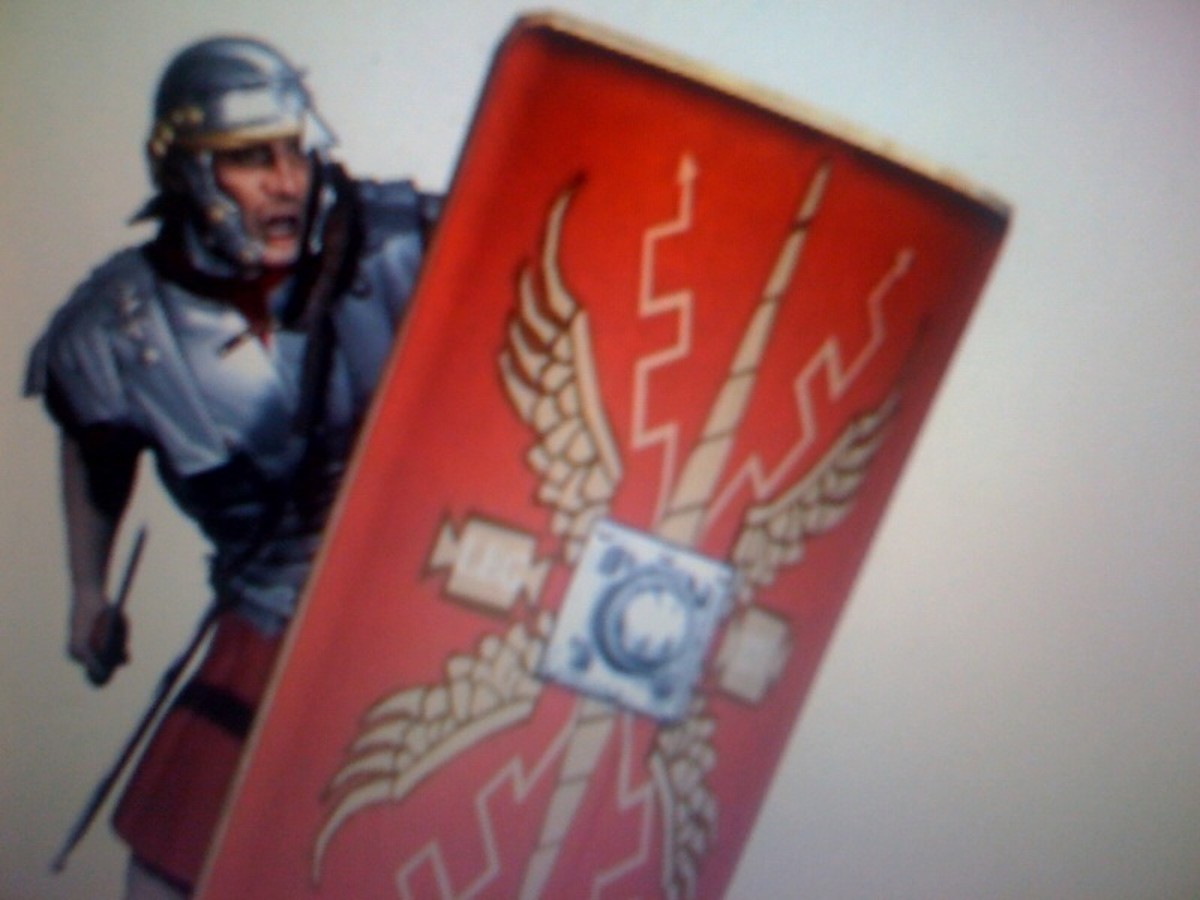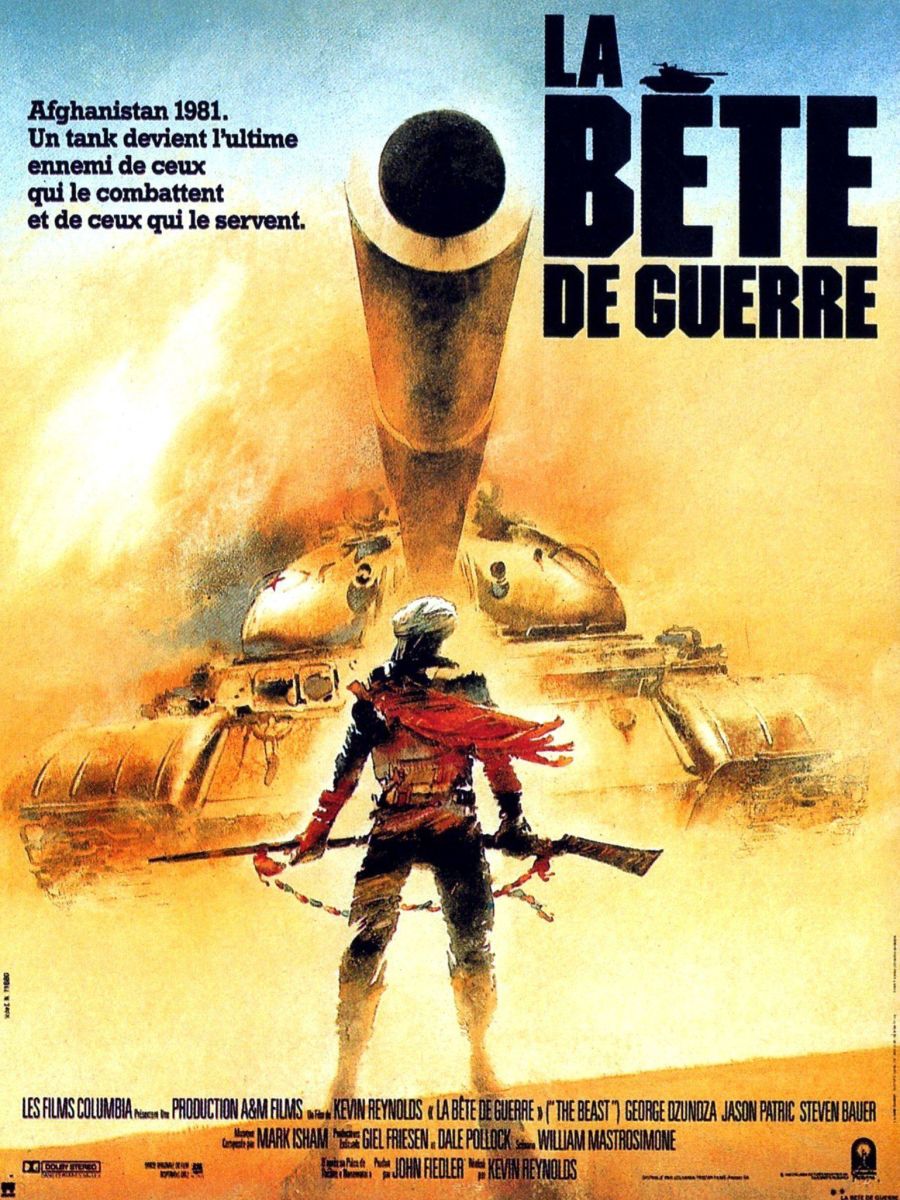The Anglo-Afghan Wars
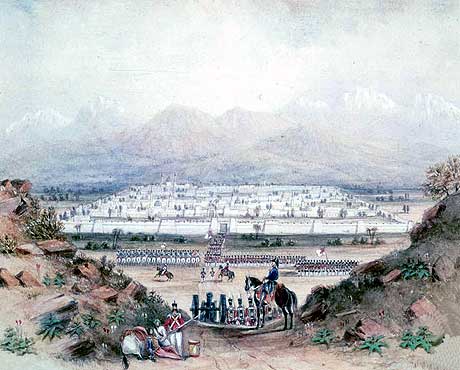
The Anglo-Afghan Wars were three wars that were fought between the British Empire and Afghan Tribesmen from 1839 to 1842, 1878 to 1880 and finally in 1919. Great Britain wanted to expand its sovereignty over neighboring Afghanistan from its base in India. It was also an attempt by the British Empire to thwart any Russian imperialist influence over Afghanistan, since that would imply Czarist intentions of invading India and its subsequent further inland expansion.
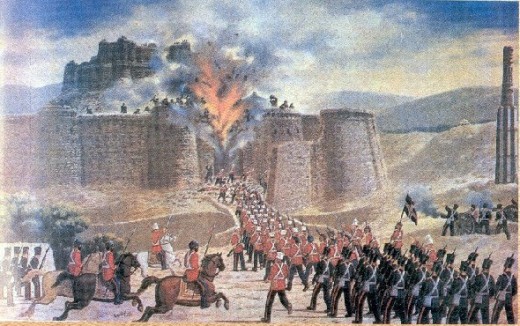
The First Anglo-Afghan War (1839-1842)
The first Anglo-Afghan War was also known as 'Auckland's folly' after the then Governor-General of India Lord Auckland. He initiated and planned the unsuccessful and botched invasion of Afghanistan that started in 1839. The invasion was based on rumors and hearsay about Russian expansionism into that region of the world. It involved the death of approximately 4500 British soldiers and 12000 war camp followers, and is considered one of the major conflicts for supremacy of influence and power in Asia between the erstwhile Russian and British empires.
Precursor to the war
It all began with Dost Mohammed Khan of the Barakzay clan assuming the throne of Afghanistan in 1826 after a civil war that initially erupted in 1816. The British Empire was by then ruling the entire subcontinent of India de facto. The Russian Empire was also attempting to gain a foothold in Central Asia, and had formed an alliance with the Persians who had territorial disputes over some provinces with the Afghans.
With both Russia and Great Britain seeking presence in Afghanistan, Dost Moḥammed Khan was forced to balance diplomatic relations with the two. The British, fearing immediate threat from the Russians, sent an envoy to Afghanistan to forge an alliance. When negotiations failed, an invasion was ordered by Lord Auckland to remove Dost Mohammed and replace him with the erstwhile ruler of Afghanistan, Shah Shoja, who was considered pro-British. By August 1839, Shoja was installed at Kabul as the king, and Dost Mohammed fled, only to be captured later and exiled with his entire family to India.
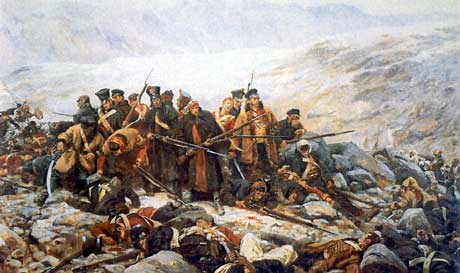
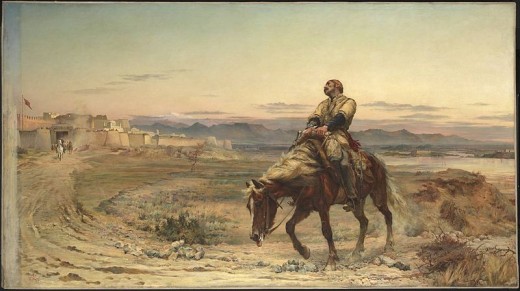
The War
The Afghans, who were always fiercely independent, could not tolerate the occupation by a foreign country or a king that had been forcibly imposed upon them. In due course, insurrections broke out, with the British, eventually realizing their occupation being untenable. Dost Mohammed's son, Akbar Khan, was taken into confidence to discuss the terms of withdrawal. However, Akbar Khan betrayed the British and killed their envoy Sir William Hay Macnaghten. The British decided to abandon their camp at Kabul and marched out on January 6, 1942 along with 4500 British and Indian troops and approximately 12000 camp followers.
On their way down the Kabul River, through treacherous snowbound ravines, passes and gorges, they were attacked by fierce Afghan tribesmen and were massacred to lesser than 40 men. Only a lone survivor, Dr. William Brydon, reached the British held fort of Jalalabad. The remaining weapons with the British army were only a few muskets, pistols and swords. The entire regiment had been decimated, other than a sole surviving captain and seven soldiers who were taken captives by the Afghans.
After the War
Meanwhile, the person who had started the war, Lord Auckland, was taken seriously ill after suffering a stroke. The new governor-general, Lord Ellenborough, had been instructed to end the war at Afghanistan by the government in Britain. He ordered the remaining forces in Afghanistan to withdraw after teaching the Afghans a lesson or two, and securing release of the prisoners still held captive by the Afghans.
Accordingly, General Nott from Kandahar advanced towards Ghazni and pillaged the countryside en route. General Pollock advanced towards Jalalabad and cleared the Khyber Pass. After basing himself at Jalalabad, the town garrison and General Pollock's regiment waged a war against Akbar Khan and defeated him. They recaptured Kabul, released the prisoners, and withdrew through the Khyber Pass towards India. Dost Muhammad was released from captivity, and reinstated as the king of Afghanistan once again.
The Second Anglo-Afghan War
Lord Lytton was appointed as the Governor-General of India in 1875 by the British Prime Minister Benjamin Disraeli. The first task that Lord Lytton took upon himself was to improve relations with Afghanistan, since Russian influence and their presence was steadily growing there. Lord Lytton was under instructions to either reduce Russian presence or strengthen the frontier by use of military force if so needed.
Towards that end, Lord Lytton wanted to send a mission to Kabul, and accordingly sent a message to Shir Ali Khan, who had assumed the throne upon his father Dost Mohammed Khan's death. However, that request was turned down by the king. Meanwhile, the Russian General Stolyetov was granted permission, while Lord Lytton's envoy Sir Neville Chamberlain was sent back from the border.
This enraged Lord Lytton, and he launched the second war with Afghanistan on November 21, 1878. Shir Ali Khan fled from his country and died in exile in 1879. The British army then installed his son Yaqub Khan as the new Emir, and signed a treaty with him at Gandomak which allowed a full-fledged British embassy in Kabul. The new Emir also agreed to conduct foreign relations as per the advice and wishes of the British Government.
After some time, the British envoy Sir Louis Cavagnari and his escort were murdered in Kabul on September 3, 1879. The British again invaded the capital, and forced Yaqub to abdicate his throne. In July 1880, a nephew of Shir Ali, And al-Rahman was installed as the new Emir. During his tenure, Russia and Britain jointly drew the boundaries of modern day Afghanistan.
The Third Anglo-Afghan War
During World War I (1914–18), the Ottoman Turks had a wider support base in Afghanistan than the British. The then Emir of Afghanistan, Habibullah Khan, however successfully manipulated a policy of not being involved in the war by balancing his foreign policies. He was assassinated on February 20, 1919 by anti-British protesters, and his son Amanullah Khan assumed the title of Emir of Afghanistan. The first thing he did after assuming the throne was to declare absolute independence from Britain. This was the precursor to the Third Anglo-Afghan War in May 1919.
By then the British Army was a depleted force due to the demands of the ongoing World War I. The third war was thus restricted to skirmishes that lasted at most a month, and largely remained inconclusive. The only benefit that the Afghans could achieve from this war was to gain independence of their foreign affairs. Accordingly, a peace treaty was signed at Rawalpindi in present day Pakistan. It recognized the total independence of Afghanistan.The Afghans also signed a treaty of friendship with Bolshevik Russia, and Afghanistan was thus the first nation to recognize the new government there. This treaty of friendship lasted until December of 1979, when Afghanistan was invaded by the Soviet Union.
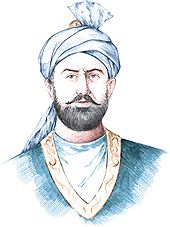
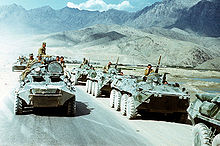
Afghanistan over the ages.
The history of Afghanistan, the land of Afghans, began around 500 BCE under the Achaemenid Empire. Alexander with his army of Macedonians arrived at Afghanistan in 330 BCE on his way to the conquest of India. The country was also strategically located in the silk road that served as a trade route between the Mediterranean and China. After repeated invasions by the Macedonians, Moghuls, Persians and Indians, Ahmad Shah Durrani founded the Afghan kingdom in the 18th century by unifying the major Afghan tribes.
The sovereignty of Afghanistan has been held despite the Anglo-Afghan wars, the Soviet invasion in the 1980s, and the present day war that still rages between the various ethnic tribesmen. The Soviets invaded the country in 1979, and after suffering major losses, retreated in 1988. By then the Americans had already made their presence felt, and reportedly $ 40 billion was pumped in jointly by Saudi Arabia and the US to arm the resistance fighters, the Mujahideen, against the Russians. Meanwhile, Pakistan with the tacit support of Saudi Arabia again, launched an attack on Kabul with the help of the Taliban, who wrested it in their control in September 1996. This, coupled with the September 11, 2001 attack on World Trade Center in New York, was cause enough for invasion by the US and British forces, and subsequently by NATO. Their presence continues to this day, though there is some talk about withdrawal, albeit at a slower pace, until the current President of the US, Barrack Obama, demits office in 2017.
Was it right for the US and NATO to invade Afghanistan?
Do you feel there will be peace in Afghanistan after NATO and the US forces withdraw?
Afghanistan: Graveyard of Empires, special guest Steven Tanner
Note from the author~
Nostradamus had once famously predicted that "a major nuclear confrontation will occur in the Middle East. The aggressor will have broken a promise not to use nuclear weapons in warfare. Naval fleets kept in the area by other powers will be scattered in ruins from the violence of the blast." This was prophesied in Part 5 of World War III in his sayings. This may after all be true with the recent happenings in the Middle East, including Afghanistan.
The greatest challenge of present day Afghanistan is to hold on and further develop the progress it has achieved so far in recent years. It otherwise faces an ignominious collapse into a state of anarchy. Afghanistan today is in a far better position than it ever was, with improved standards of living, women empowerment through education, a vibrant judiciary, government and civil society.
However, at the same time, we need to remember that there remains insecurity, political instability and economic uncertainties. Afghanistan thus needs to make its presence felt in the international stage, and establish relations in the fields of economic and military cooperation with other developed nations of the world. China, India and Russia, the three key neighbors of Afghanistan, may also be involved to play active roles, since any instability in Afghanistan will also adversely affect their own stability.
That the economic and political future of Afghanistan is uncertain, fragile and bleak is an accepted premise. The resurgence of Taliban, deficit of budget, and reliance on aids to sustain its economy and military existence are some of the major factors that hinder its growth, Thus, the top priority of the new regime in Kabul should be to maintain unity of the country and ensure stability for effective governance. Until such time, Afghanistan will remain a hotbed of internecine warfare between tribesmen, resistance or support to the Taliban depending on clan affiliations, and interference by its neighbors to achieve their own political, economic and geographic ambitions. Afghanistan will meanwhile continue to bleed.


